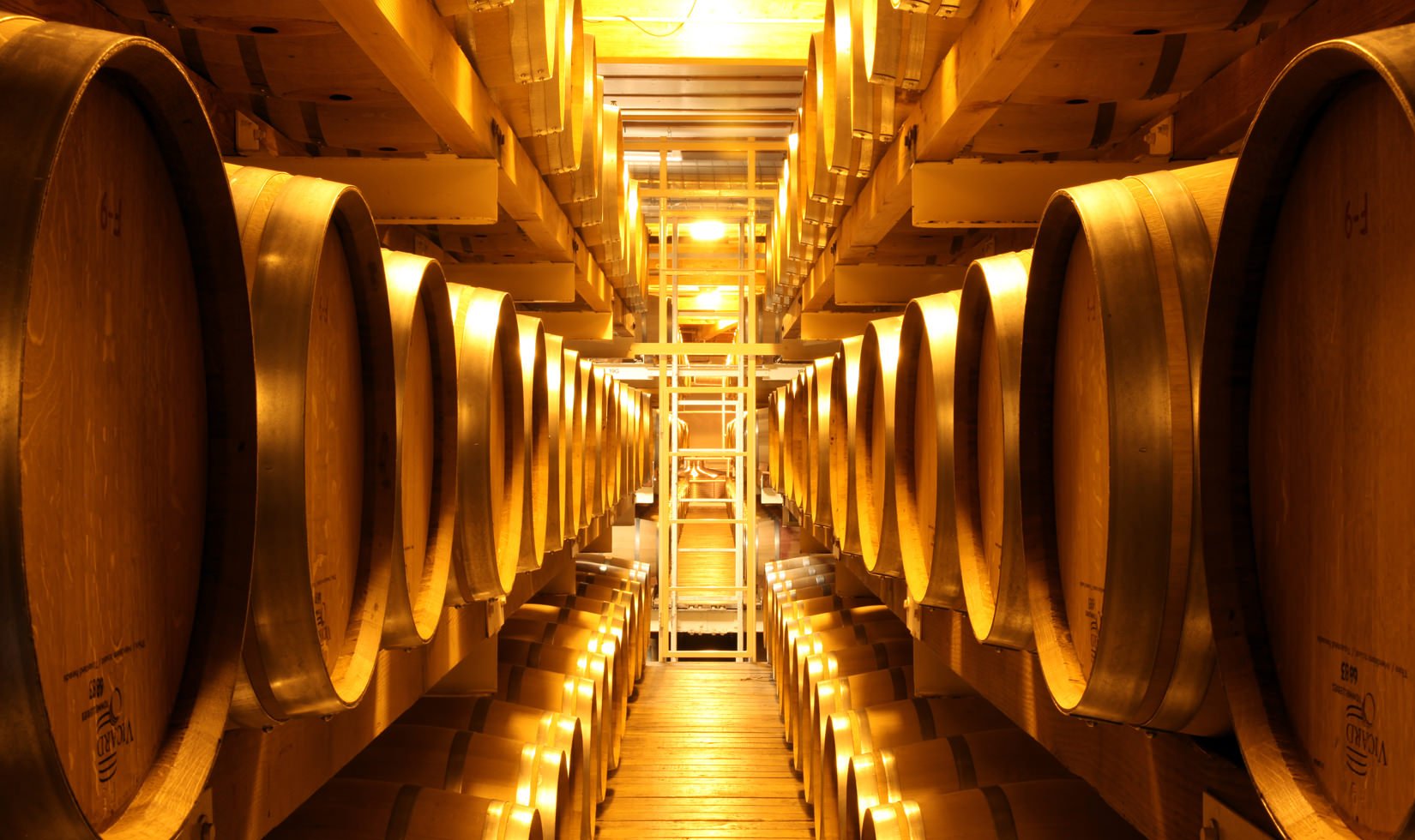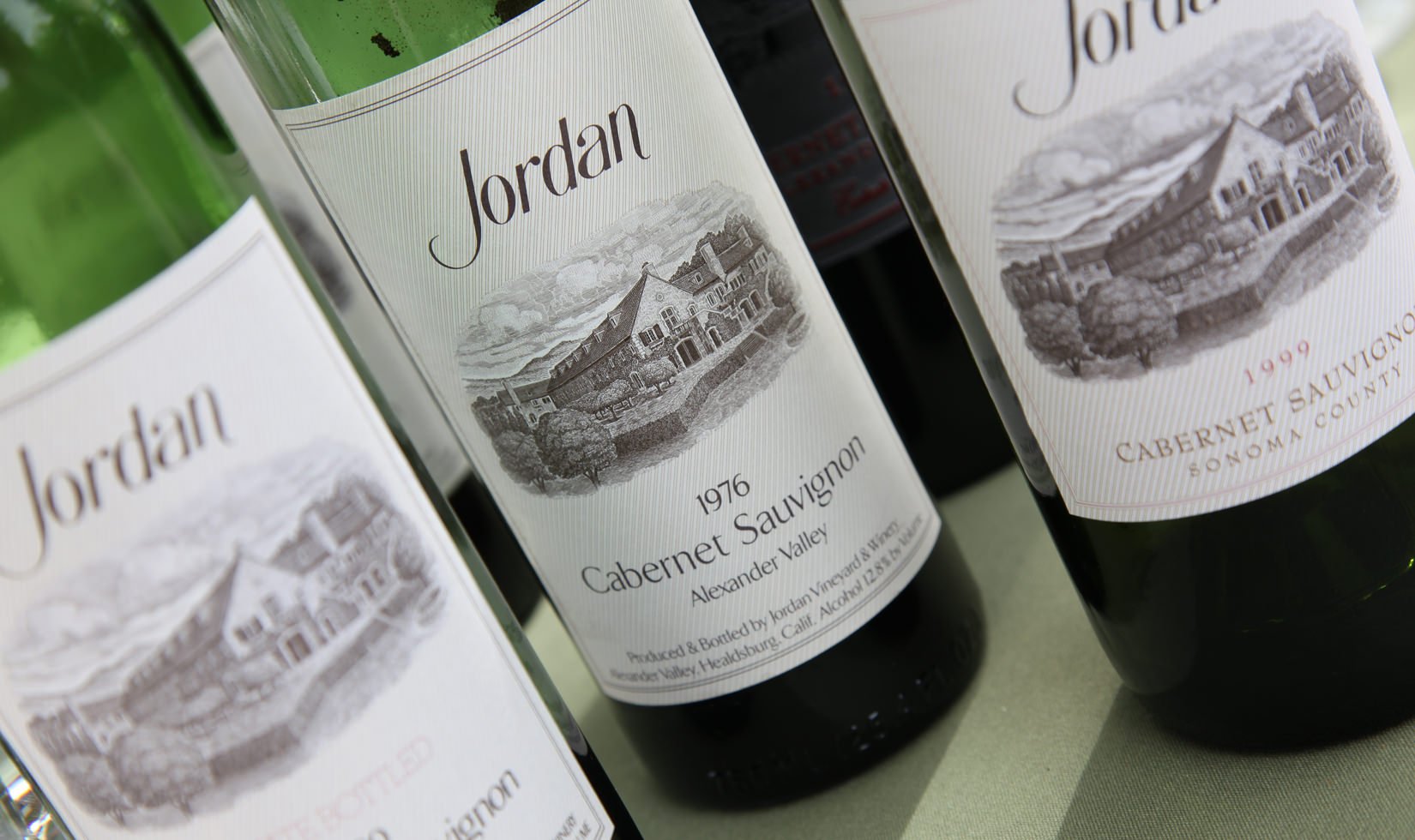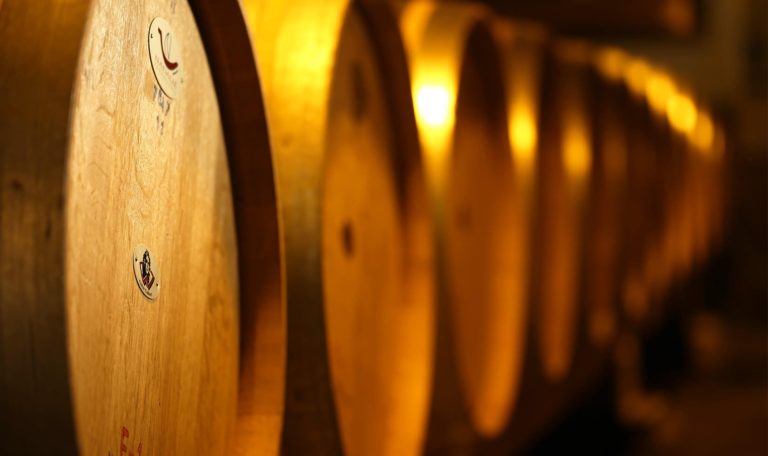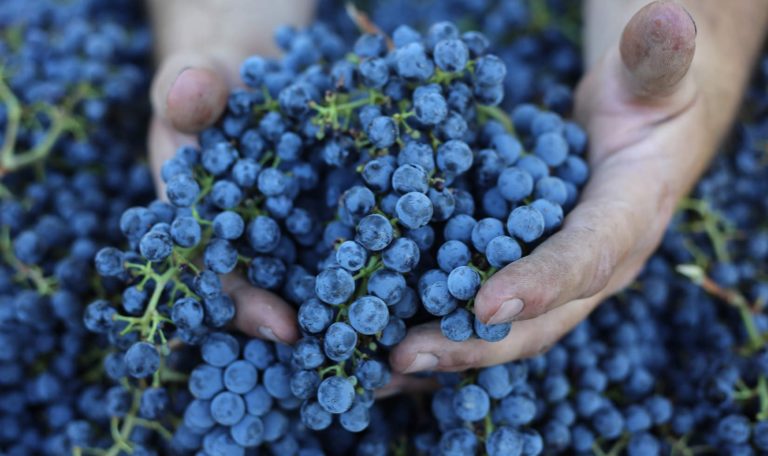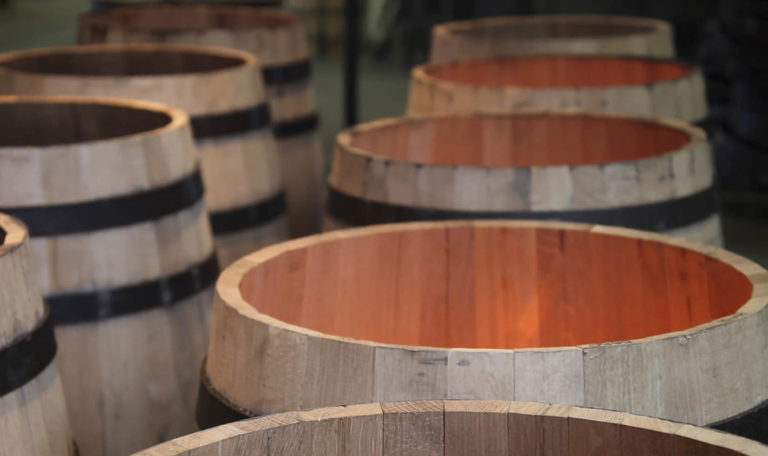Winemaking challenges come in many forms. There can be frost snaps in early spring that harm the grapevines’ vulnerable buds, untimely rains while harvesting thin-skinned grapes like chardonnay or the grudging tank of cabernet sauvignon that resists fermentation. Most challenges come from Mother Nature; others are self-inflicted. Since John Jordan took over the winery in 2005, we made a commitment to ourselves, and our customers, to get better with each new vintage. Our most recent target in this endless pursuit of perfection: the types of French oak and American oak wine barrels used for aging Jordan Cabernet Sauvignon.
Having completed my 41st vintage at Jordan last fall, I can honestly say that this winemaking challenge has been our most exciting to date. The Jordan wine style has always been focused on balance, and while the role that oak plays in our winemaking has not changed, these new French characters have been introduced to the story line to challenge old assumptions and thicken the plot.
Here’s the story behind why Jordan Cabernet Sauvignon has made the move to 100-percent aging in French oak wine barrels with the 2015 vintage.
Original Wine Barrel Aging Philosophy
American oak was the foundation for Jordan Cabernet Sauvignon back in the 1970s and 1980s, making up about 50% of the barrels employed. Like many pioneers during the California wine “Gold Rush,” we believed that American oak was a natural complement to a California cabernet sauvignon. Founder Tom Jordan also wanted to pay equal tribute to the Bordeaux wines that inspired him to start Jordan, and the Beaulieu Vineyard’s Georges de Latour, aged with American barrels, that made him change his mind about the potential of California cabernet in the 1960s.
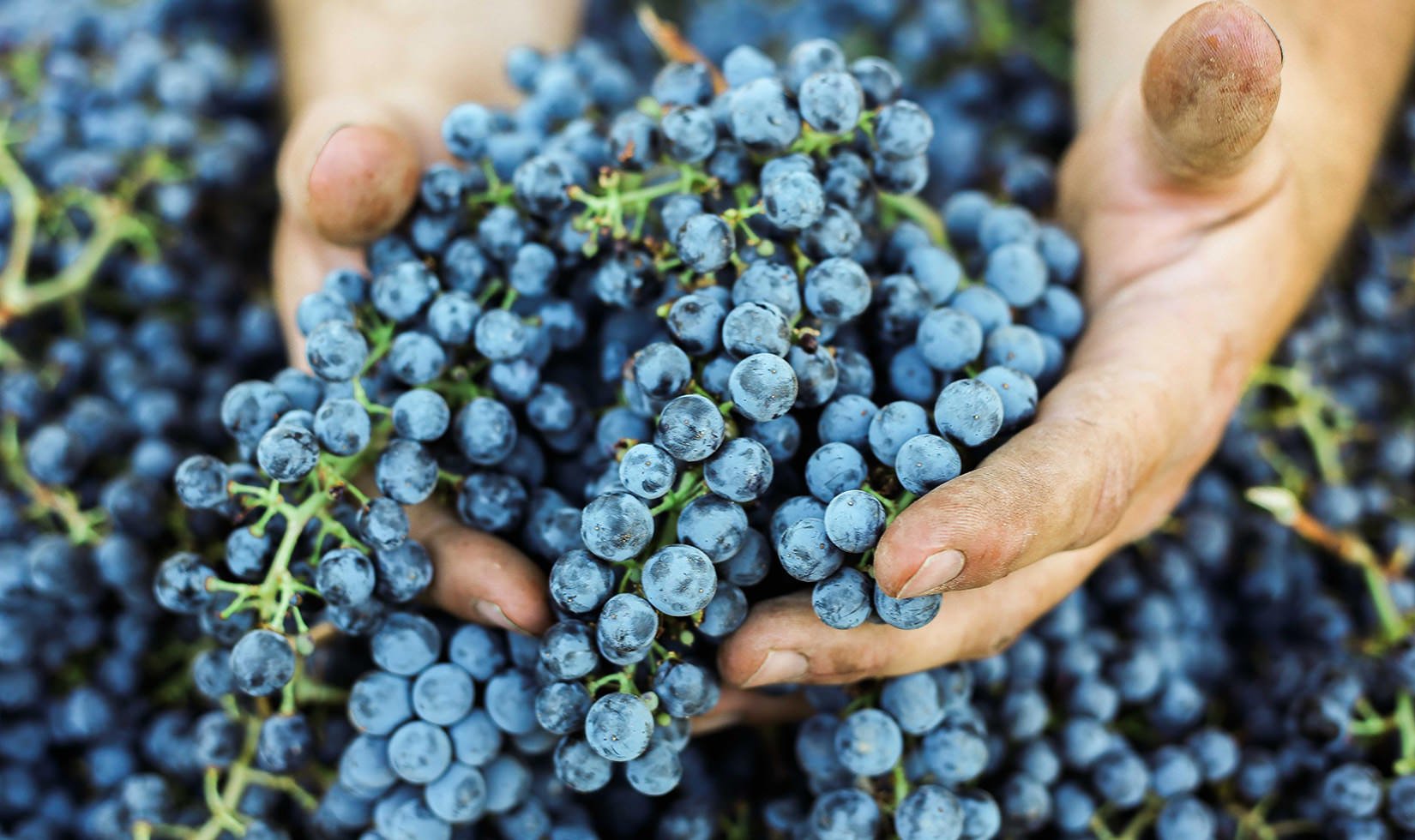
Sourcing the Best Grapes
To reach the conclusion that it was time to go against the grain and move toward all French oak for aging our wine, we started in the vineyards.
The highest priority in winemaking, as described in our winemaking practices, is to begin with the highest quality ingredients, in our case, the best grapes from benchland and hillside vineyards in Alexander Valley that have ideal soil composition, water-holding capacity and climate. Jordan was founded under the “estate bottled” philosophy of growing all of our own grapes, but after decades of working with our own vineyards on the valley floor, we discovered superior soils and thus superior grapes on the other side of the river in east Alexander Valley. John Jordan fully supported my desire to develop relationships with those grapegrowers with the goal of elevating the fruit concentration in Jordan Cabernet Sauvignon while staying true to our elegant, food-friendly style.
After ten years of refining which vineyards, blocks and growers are best-suited for Jordan Cabernet Sauvignon, we’ve finally found a whole new level of balance—grapes that achieve ideal ripeness at lower sugar levels grown in vineyards with well-drained soils that are quite resilient to Mother Nature’s quirks. Grower parcels and our top estate vineyard blocks are combined to consistently yield some of the most pure, high-quality fruit in our four decades of winemaking history. The black fruit expression and concentration in Jordan Cabernet Sauvignon has naturally increased.
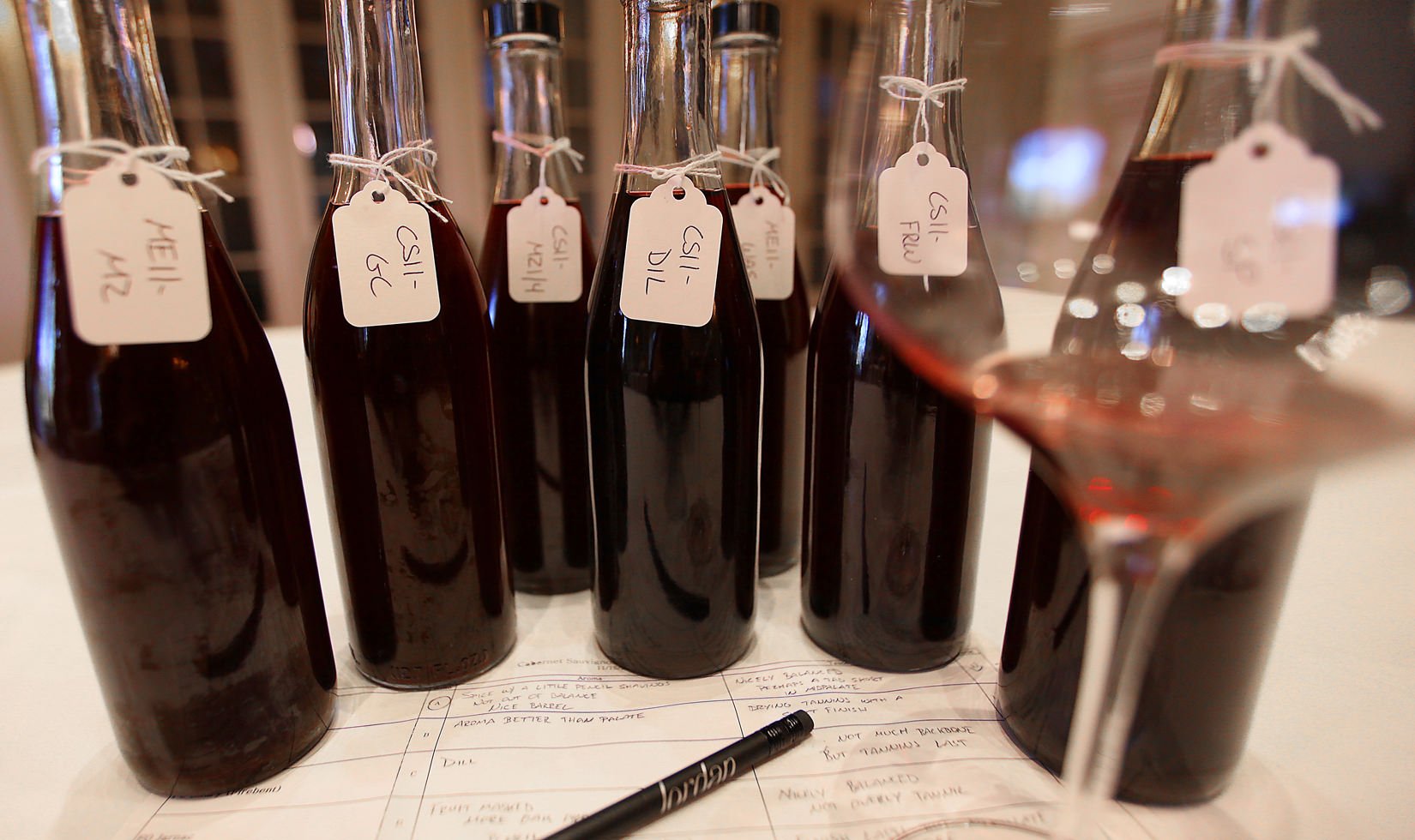
Once those young cabernets made their way into the blind tasting exercises for barrel selection, the winemaking team began choosing French oak barrels increasingly as our preference for aging Jordan. Why? The fruit demands it. We want barrels that best support and showcase this pristine, dark fruit character, and American oak masks those beautiful flavors. French oak is superior in its ability to frame and better showcase the intensity of fruit in the wine. The 2013 Jordan Cabernet Sauvignon was aged in 86% French oak, and the percentage is rising from there with each new vintage. Not a single new American oak barrel touched the 2015 Jordan–only new and one-year-old French barrels–making it our first vintage aged entirely with tonnellerie française.
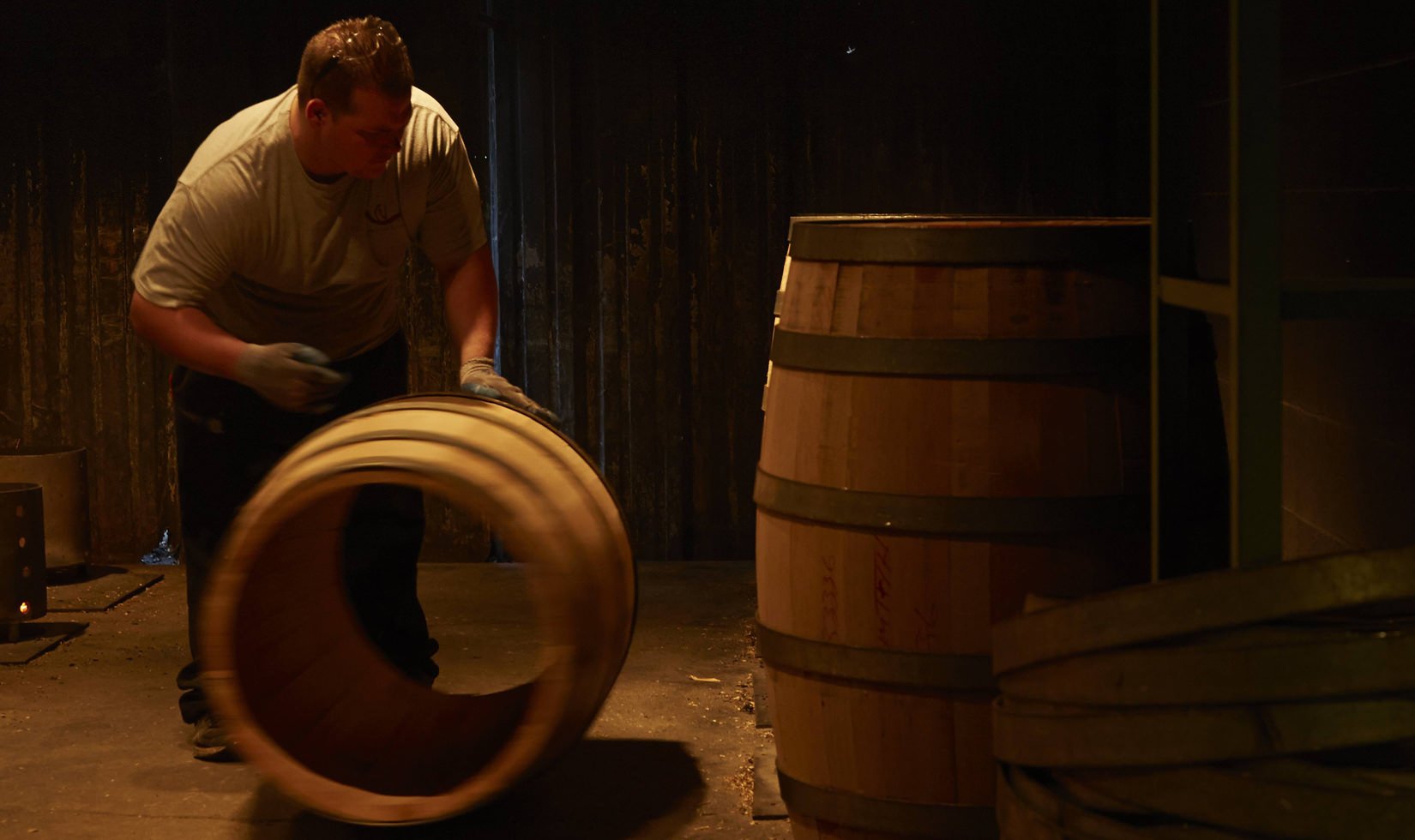
How Oak Aging Influences a Wine
The potential impact of oak aging on the final wine is tremendous. Oak’s influence on a wine’s flavor profile is second only to its fruit. When used judiciously, barrel aging both frames and highlights everything great about a vintage without competing for attention. A barrel showcases the wine’s fruit expression, aids in character development, rounds out the overall structure, and literally put, spices up the story line without interfering or confusing the message of the wine. The aroma and structural contributions that a wine may take on during oak aging are numerous. Which contributions the barrel imparts to the wine largely depend on a multitude of factors, such as the source of the oak trees, species, tightness of grain, age of the tree, length of seasoning period, toasting level during barrel production, and whether the oak barrel is being used for the first, second or third time.
Tempering the amount of new oak used in wine aging—usually less than 50% total—also remains key to harnessing the balance between fruit and oak in Jordan Cabernet Sauvignon. Over time, we’ve found that barrels from a particular area within the Tronçais forest in central France rank highest in our blind tasting sessions; they possess great consistency from year to year and their flavors integrate well with our fruit. Oddly enough, the most expensive wine barrels impart the least amount flavor. The charm is in their subtleties.
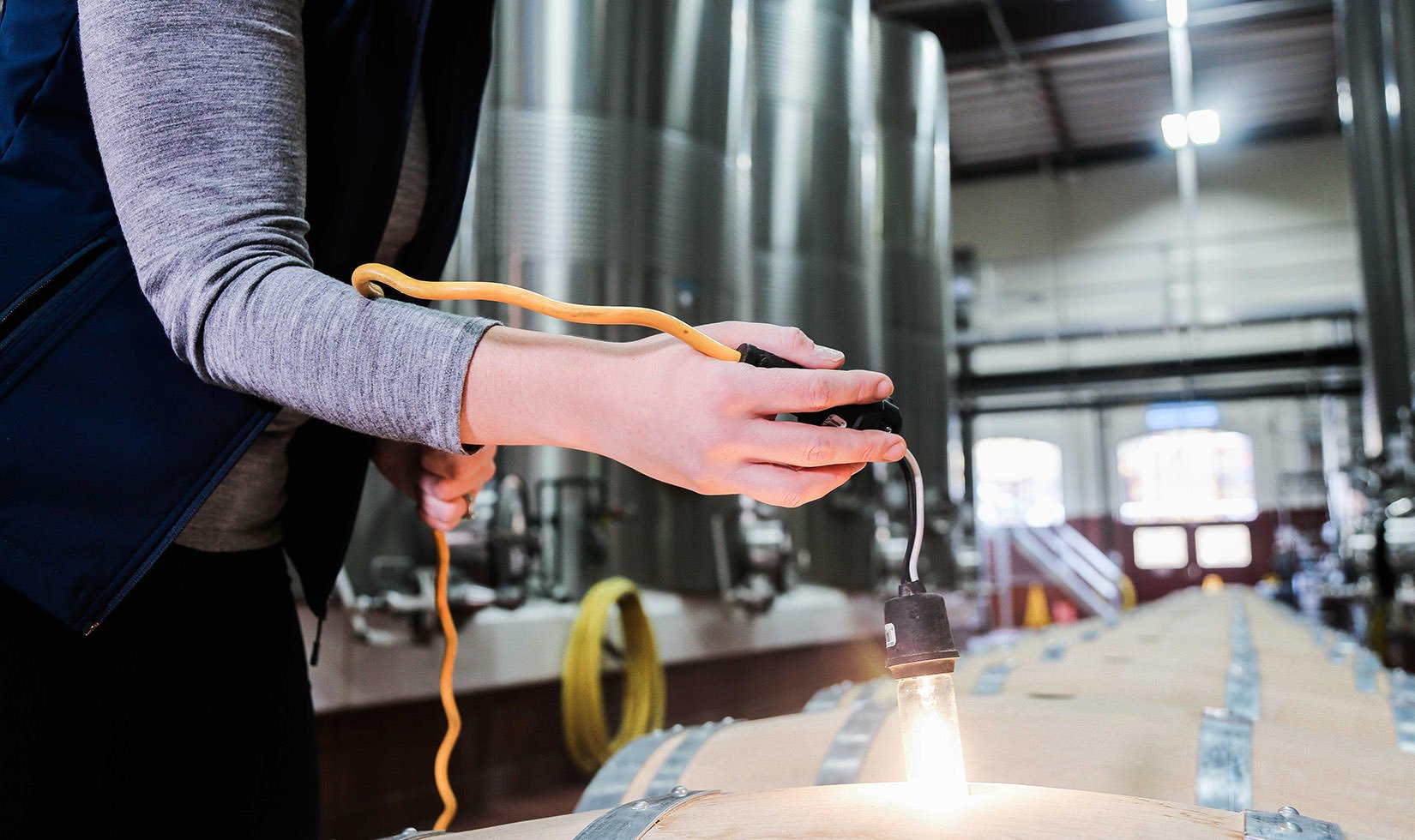
Serious Wine Barrel Selections
Jordan’s barrel selection process has always been rigorous, but we continue to fine-tune which French barrel makers are performing to our standards and which toast levels and grains help us achieve Jordan Cabernet Sauvignon’s classic style.
Once harvest is complete, the specific attributes of each barrel are assessed in blind tastings to determine its potential compatibility with every vintage of Jordan. Basically, coopers must try out for their jobs each year. If noted barrel producers change in quality or fundamental style, they may be removed from or added to the Jordan barrel-aging program, depending on what those changes contribute to the wine. Every vintage begins with a clean slate. Unlike many wineries, Jordan purchases its French oak wine barrels after harvest—once the vintage personality has presented itself—not prior to the harvest. We have also begun leasing barrels since 2015, which is much more efficient than trying to store and sell the used barrels ourselves. Barrels are returned after being employed for only two vintages of cabernet.
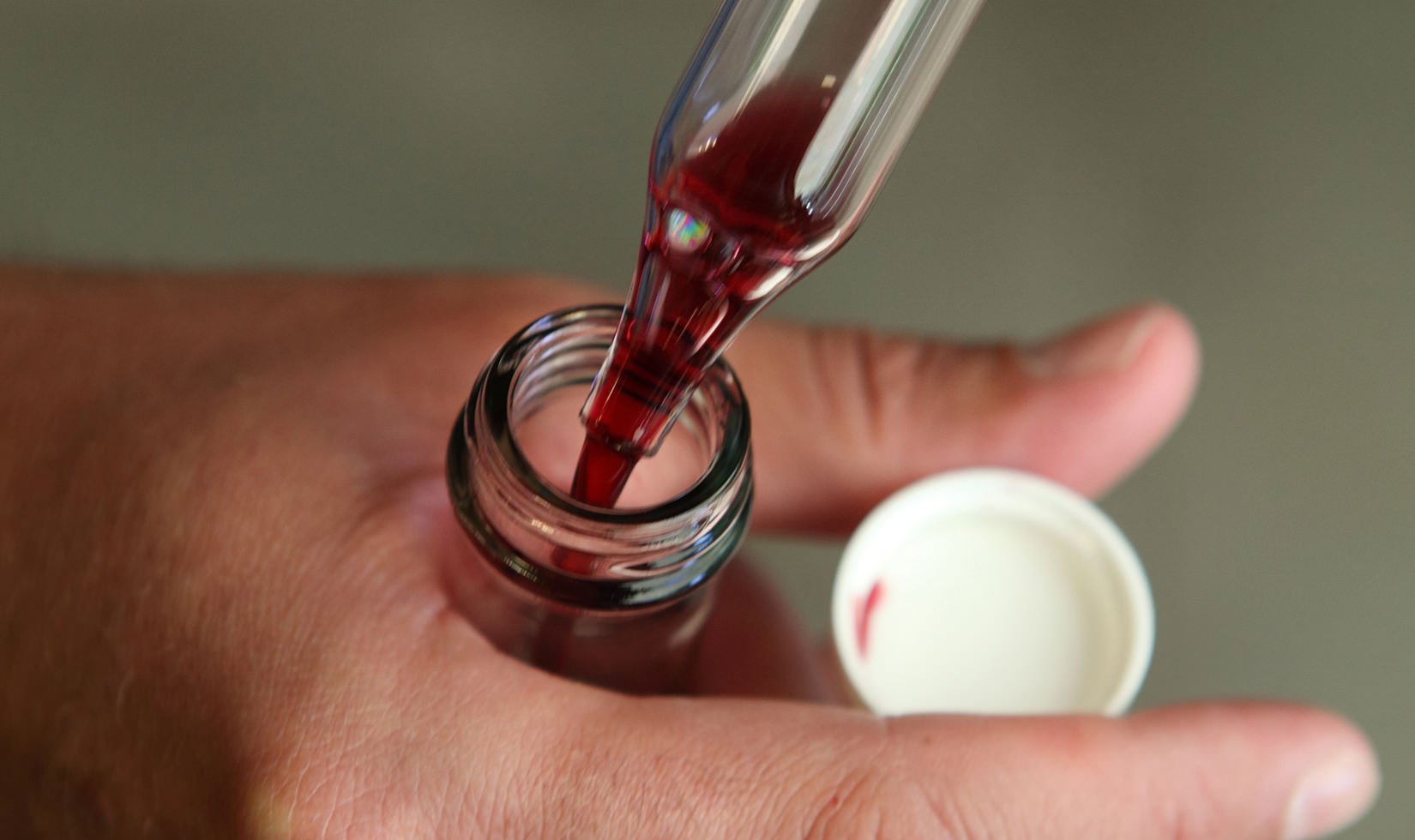 Cooperage samples–a specific cabernet blend from the previous vintage aged in different types of oak barrels—are examined to determine if the oak has overpowered or elevated the fruit, enhanced or muted aromas and if the tannins integrated with the overall balance of the wine. From the attack to the mid-palate and all the way through the finish, it is amazing how each type of barrel can so drastically change the composition and perception of the finished wine.
Cooperage samples–a specific cabernet blend from the previous vintage aged in different types of oak barrels—are examined to determine if the oak has overpowered or elevated the fruit, enhanced or muted aromas and if the tannins integrated with the overall balance of the wine. From the attack to the mid-palate and all the way through the finish, it is amazing how each type of barrel can so drastically change the composition and perception of the finished wine.
Although the differences in barrels are vast, from a winemaker’s perspective, the most important thing is that the French oak wine barrels of a specific type from a single producer remain consistent from year to year. With the unique grape chemistry of each vintage due to varying climatic conditions during the growing season, the barrels are one thing we winemakers expect to bring some control and consistency to the resulting wine.
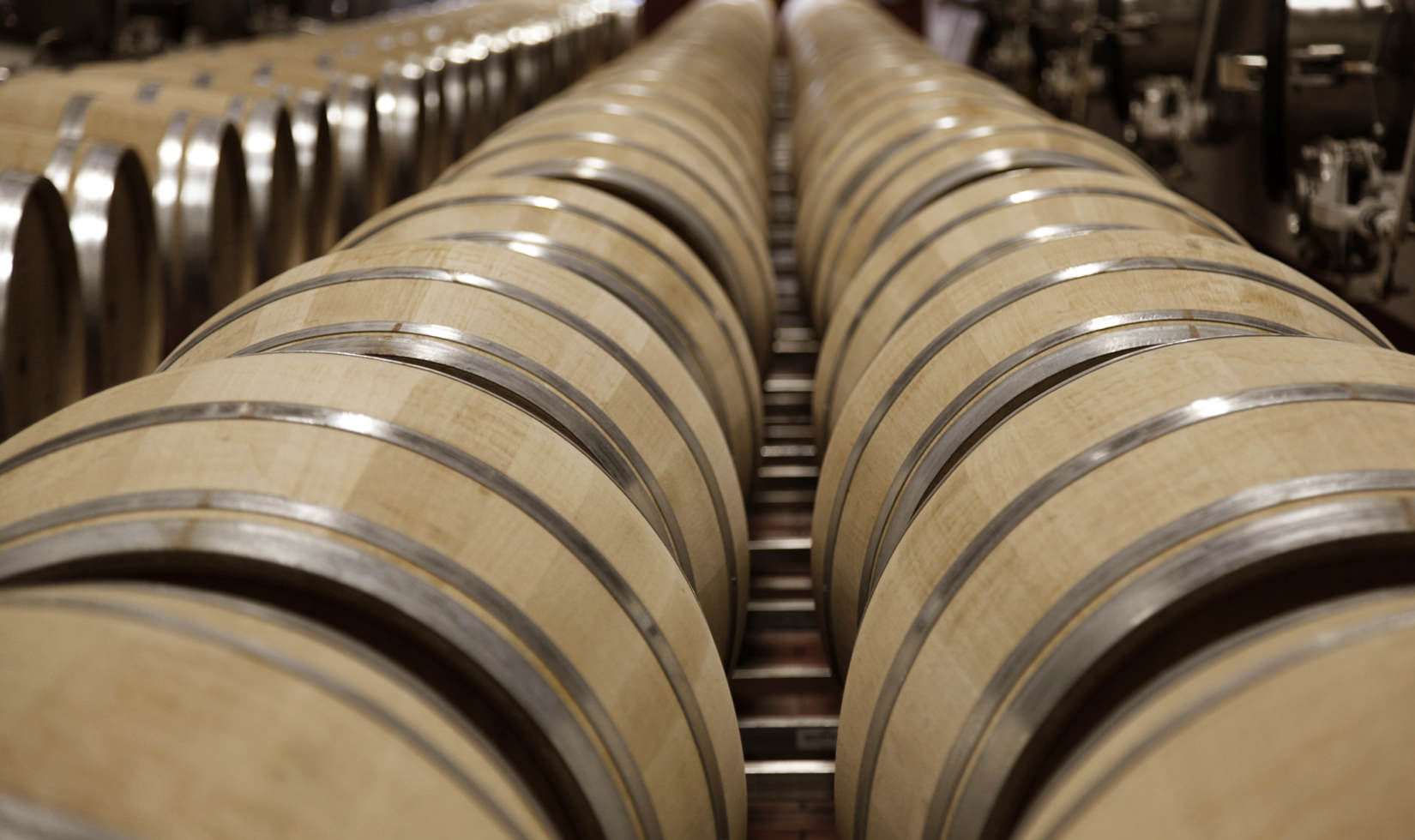
Each growing season, I’m faced with the challenge of preserving the original vision of balanced, food-friendly wines, while letting the thumbprint of each vintage shine through in the wine. As each new year begins, I am reminded of John Jordan’s desire to continue getting better each vintage. That challenge is exactly what inspires our winemaking team. We are already working on the next one.
Learn more about our winemaking process.
